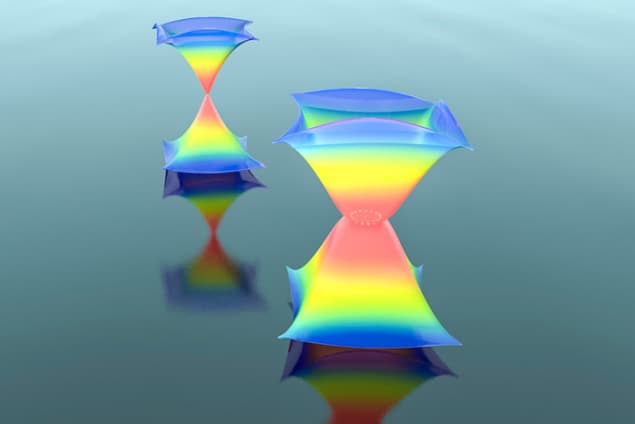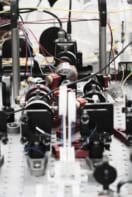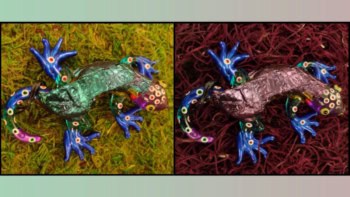
A material with exotic optical properties that make it both transparent and reflective to light has been created by physicists in the US and Singapore. The material, which resembles a thin piece of glass with tiny holes drilled in it, could be used to boost the output of some lasers and detect extremely small quantities of biological and chemical materials.
When light travels through a transparent material without losing energy, the system can be described by a set of energy states with values that are real numbers. In contrast, if light is absorbed during transmission, the energy states are described by complex numbers – with the imaginary part describing the absorption process. One fascinating element of complex energy states is that it is possible to have “exceptional points” where two or more energy states have the same value. Where this happens, the interplay between the energy states can cause the system to behave as if no energy loss occurs. An example of this that has been observed in the lab is “loss-induced optical transparency”, whereby a material that is normally opaque can transmit light in specific directions.
Distorted cone
Now, Marin Soljačić, John Joannopoulos and colleagues at the Massachusetts Institute of Technology (MIT) have created a photonic crystal with exceptional points in its “Dirac cone” – which is the cone-shaped function that describes the relationship between the frequency and momentum of light in the material (see figure). Their crystal is a thin layer of silicon nitride that is drilled to create a square lattice of holes (diameter 218 nm) separated by 336 nm. The size and separation of the holes was chosen so that the system is described by a Dirac cone. A true Dirac cone has real energy states, so the team needed to distort the cone so that the states are complex. This was done by simply making a silicon-nitride layer with a finite thickness of 180 nm. In this case, the imaginary component corresponds to light being radiated out of the photonic crystal, rather than light being absorbed.
Calculations and simulations done by the team suggest that when the photonic crystal is immersed in a liquid with a specific index of refraction, a ring of exceptional points should appear around its distorted Dirac cone (see figure). This was confirmed by firing light at the crystal and measuring how much was reflected at different incident angles and frequencies. The data reveal a sharp drop in the reflectivity for incident light that is on the ring of exceptional points. This effect is called “coupled-resonator-induced transparency” – or CRIT – and the team believes that it could be used to boost the performance of some optical devices.
Soljačić believes the effect could be used to boost the output of photonic-crystal-based lasers by a factor of 10. “Photonic-crystal surface-emitting lasers are a very promising candidate for the next generation of high-quality, high-power compact laser systems,” he says.
“Our system could also be used for high-precision detectors for biological or chemical materials, because of its extreme sensitivitym,” adds team member Chia Wei Hsu. This is because a tiny change in the immersion fluid will have a large effect on the CRIT.
The research is described in Nature.



